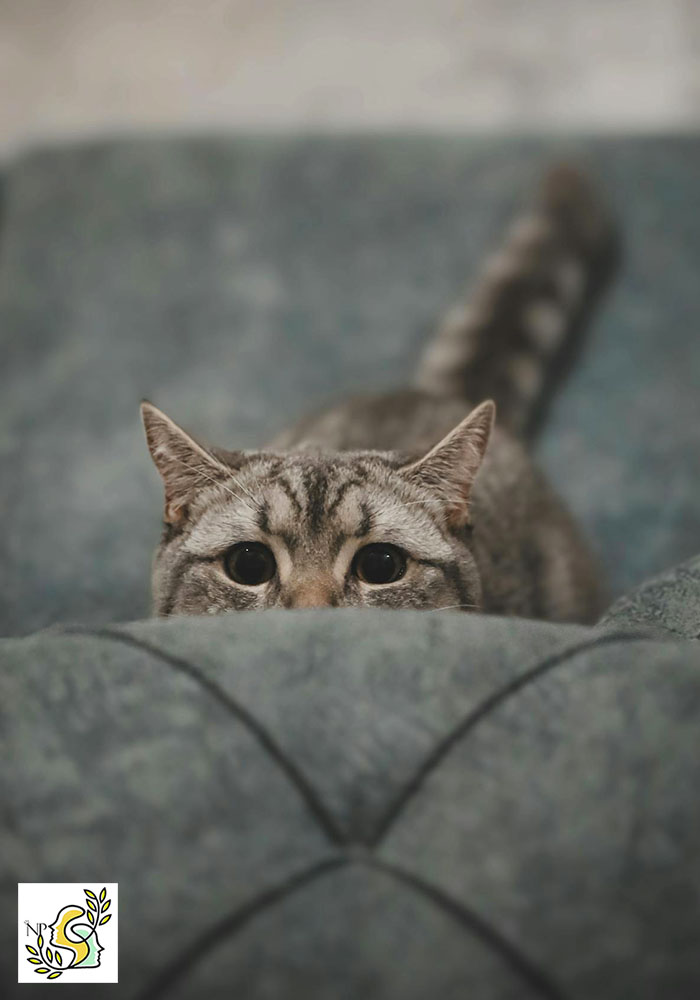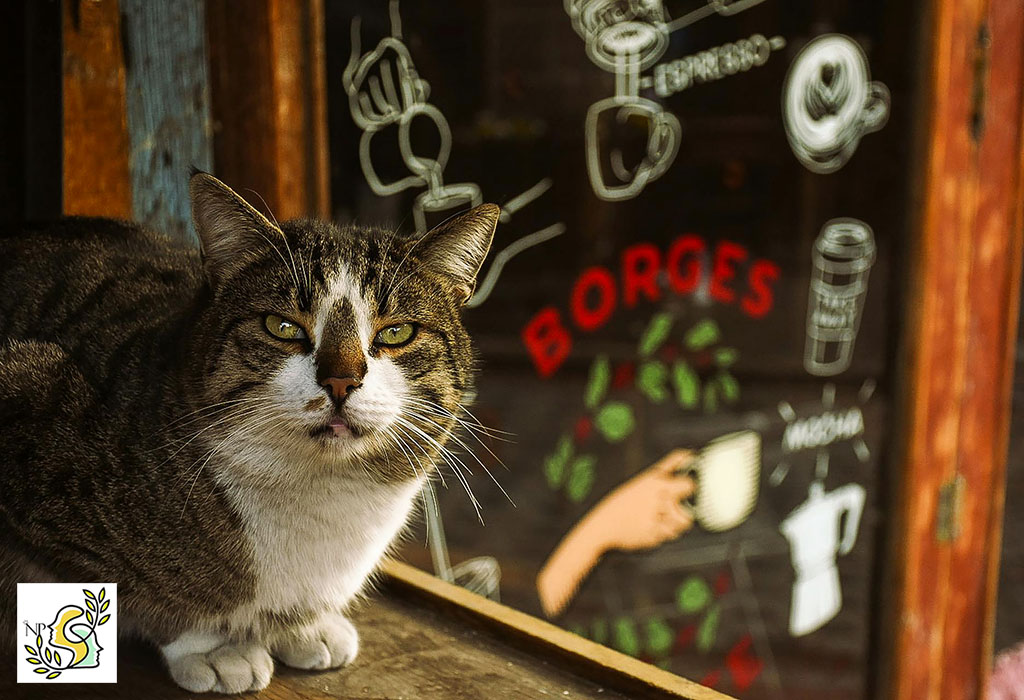Introduction: The question of whether felines can display behaviors analogous to attention deficit hyperactivity disorder (ADHD) observed in humans is an emerging topic of investigation in the fields of animal behavior and veterinary science. ADHD in humans is a neurodevelopmental disorder characterized by persistent patterns of inattention, hyperactivity, and impulsivity, with neurological and genetic influences. Cats, known for their high energy and innate curiosity, sometimes exhibit behaviors that could superficially resemble ADHD symptoms, such as increased activity levels, brief attention spans, and impulsive actions. The cat with ADHD exhibited an unusually high level of restlessness and difficulty focusing during playtime. (6,1,5)
Recent studies suggest that ADHD in cats may manifest through hyperactive behaviors, difficulty focusing, and impulsivity, similar to the condition observed in humans. However, the applicability of the ADHD framework to feline behavior is debated, as animal behaviors often diverge significantly from those in humans. This analysis seeks to critically evaluate the scientific basis for comparing feline behaviors with ADHD, by examining the neurobiological and behavioral underpinnings of ADHD, the natural behavioral tendencies of cats, and current research on animal behavioral disorders. Through a rigorous assessment of these factors, this study aims to clarify misconceptions and assess the feasibility of establishing a veterinary diagnostic model for ADHD-like behaviors in felines. (3)
Table of Contents
What is ADHD?
what is ADHD? Attention-deficit/hyperactivity disorder (ADHD) is a neurodevelopmental condition characterized by chronic patterns of inattention, hyperactivity, and impulsivity that disrupt functional or developmental processes. Typically, symptoms manifest in childhood and can persist, impacting daily life aspects such as social interactions and academic or occupational performance. ADHD in children is a neurodevelopmental disorder characterized by symptoms of inattention, hyperactivity, and impulsivity, which can significantly impact their academic performance and social interactions. Pediatric Neuropsychology plays a crucial role in understanding the cognitive and behavioral effects of ADHD in children, helping to guide diagnosis and treatment strategies. Although ADHD is frequently diagnosed in children and adolescents, it is also prevalent among adults. (8,7)
Individuals with ADHD commonly exhibit a consistent profile of the following symptoms:
- Inattention: Difficulty in maintaining focus on tasks, sustaining attention, and organizing activities. These challenges are not attributed to opposition or misunderstanding.
- Hyperactivity: Persistent restlessness or excessive movement, even in situations where such behavior is inappropriate. This may include behaviors like fidgeting, tapping, or talking excessively.
- Impulsivity: Acting prematurely without considering consequences, frequently interrupting others, or struggling with self-regulation. Impulsive behaviors may also involve a need for immediate gratification and difficulty in delaying rewards or assessing long-term outcomes.
ADHD in cats

Cats can get ADHD? Similar to autism, attention deficit hyperactivity disorder (ADHD) is a condition exclusive to humans and is not identified in other animals, including cats and dogs. Nonetheless, some animals may exhibit behaviors reminiscent of ADHD-like symptoms observed in humans. For instance, certain cats may display high levels of distractibility and have difficulty responding to commands. Studies have shown that individuals with ADHD and cats may experience unique interactions, as the presence of pets like cats can influence attention and behavior in children with ADHD. (5,3)
Currently, there is no formal recognition of ADHD in cats, nor is there scientific research supporting a hyperactive disorder diagnosis in felines. This absence of research does not rule out the possibility, but suggests that behaviors comparable to ADHD symptoms may often be attributed to typical feline behavior and communication patterns rather than neurodevelopmental or mental health disorders. The range of normal behavior in cats is broad; what might be typical for one cat could appear abnormal in another. Although ADHD is not an accepted diagnosis in cats, some may exhibit behavioral patterns that could resemble this disorder. Notably, such behaviors must persist over an extended period to be considered atypical. It is also essential to differentiate abnormal behaviors from those arising from underlying medical conditions. Disorders such as hyperthyroidism, cognitive dysfunction, and feline hyperesthesia syndrome (FHS) can present symptoms that overlap with attention-deficit characteristics, complicating the distinction between behavioral and medical causes. (1)
ADHD in cats’ symptoms
Although ADHD is a neurodevelopmental condition specific to humans, certain behaviors in cats may resemble some of its characteristics. ADHD symptoms in cats include:
- Restlessness: A persistent need for movement or difficulty remaining calm
- Distractibility: Challenges with sustained focus or an increased tendency to become easily distracted
- Impulsivity: A propensity to act spontaneously without apparent forethought
- Frequent activity switching: An inclination to rapidly transition between activities
Potential factors contributing to these behaviors in cats are:
- Genetic predisposition: Each cat has a unique behavioral profile that may reflect inherited traits.
- Environmental influences: The conditions in which a cat lives can impact its behavior.
- Previous experiences: A cat’s history may shape its behavioral tendencies.
- Medical conditions: Certain health issues, such as infections, allergies, or hyperthyroidism, can lead to increased activity and hyperactive behavior in cats. (3,2)
You might be interested in hearing stories from others with cats with ADHD. (An Update on Cat’s ADHD Journey / From Cat & Nat Unfiltered Podcast)
Cat ADHD test
There is no formal diagnostic test for attention deficit hyperactivity disorder (ADHD) in cats, similar to the assessments used for humans. However, veterinarians and animal behaviorists may observe signs of ADHD in cats including:
- Impulsive actions;
- Sudden mood swings, transitioning from affectionate to defensive without apparent cause;
- Control over interaction times, with affection and attention being dictated by the cat;
- Prolonged sleeping durations, surpassing the average for their species;
- Selective eating habits, with a preference for one or two specific food brands and refusal to eat other types;
- Disinterest in food when the type or brand is changed;
- Avoidance of the litter box when the litter is altered;
- Intense, prolonged focus on particular objects or activities in a seemingly abnormal manner;
- Increased defiance beyond typical feline behavior;
- Engaging in pursuit behaviors, such as chasing people or other animals;
- Excessive vocalization;
- Frequent leaping and bounding across various surfaces, including those that are off-limits.
While these behaviors are not uncommon in cats generally, the presence of these symptoms across a significant proportion of the feline population complicates the diagnosis of ADHD in cats, as certain hyperactive traits may naturally occur in some individuals while others may not exhibit them. (4,5,1)
How to treat a cat with ADHD?

Hyperactive Kitten Syndrome is a behavioral phenomenon observed in juvenile felines, characterized by heightened levels of activity, impulsivity, and difficulty in maintaining restfulness. Kittens exhibit high energy levels, often engaging in rapid, erratic movement, such as pursuing objects like a piece of string. This behavior is typical of their developmental stage, as kittens require substantial stimulation to satisfy their innate curiosity and explore their environment. According to Lusvardi, this behavior is also influenced by biological factors, with brain development playing a significant role in the manifestation of hyperactivity. Research on cat ADHD treatment has shown promising results in improving behavioral issues through a combination of environmental enrichment and veterinary interventions.
How to calm down a hyper cat? To manage hyperactivity, several strategies can be implemented:
- Engage in daily play sessions to help the cat release energy.
- For cats left alone for extended periods, environmental enrichment with stimulating toys can be beneficial.
- Introducing another animal into the household may provide additional stimulation, promoting social interaction.
- The use of feline pheromones in the environment may help reduce stress and induce relaxation.
- In severe cases, veterinary-prescribed medications may be necessary to manage hyperactivity in some cats.
Hyperactivity is a relatively common behavioral issue in cats, particularly for those not accustomed to such behavior. (1)
ADHD medication for cats
Your veterinarian may give your pet medications for elevated blood pressure or medication to calm them. Therapies and treatments to help keep your pet at a normal body temperature may also be a critical part of treatment. Organ damage from ADHD medications is rare but has been seen, specifically in the kidneys.
ADHD medication exposure in pets is generally treatable. Animals exhibiting symptoms due to such exposure typically require hospitalization until the medication is fully eliminated from their system. Veterinary interventions may include medications to address elevated blood pressure or to calm the animal. Additionally, therapeutic measures to maintain normal body temperature may be essential in managing the condition.
While organ damage from ADHD medications is uncommon, it has been observed, particularly in the kidneys. Seeking immediate veterinary care is crucial to minimize potential organ damage caused by the medication. (4,3)
Conclusion
In conclusion, although the concept of ADHD in cats is not universally accepted or well-established within the scientific community, emerging evidence suggests that certain feline behaviors, such as hyperactivity, impulsivity, and attention difficulties, may resemble those seen in human ADHD.
A cat with ADHD may exhibit hyperactive behavior, difficulty focusing, and an increased need for stimulation compared to other cats. Research on feline neurobehavioral disorders is still in its early stages, and additional studies are required to determine whether these behaviors are indicative of ADHD or potentially linked to other factors, including anxiety, stress, or medical conditions. Veterinarians emphasize the need for thorough behavioral assessments to rule out alternative causes and to guide appropriate interventions for cats displaying hyperactivity or attention-related symptoms. Therefore, while the possibility of ADHD in cats remains intriguing, further research is necessary to draw definitive conclusions.
by the way, have you ever seen a cat with OCD? :))
Frequently Asked Questions
Frequently Asked Questions about ADHD in cats:
Can cats get ADHD?
Not really, cats cannot have ADHD because it’s a condition that’s specific to humans. But in some cases, similar symptoms may also be seen in cats.
How to help a cat with ADHD?
Exercising regularly is one of the easiest and most effective ways to reduce the symptoms of ADHD in adults and improve concentration, motivation, memory, and mood.
Can cats have ADHD or autism?
Cats can’t have autism, but they can be diagnosed with other conditions, and like humans and other animals, some cats have special needs.
How do you know if your cat has ADHD?
Some animals may exhibit behaviors similar to those seen in ADHDers. For example, some cats are easily distracted and don’t follow commands.
Does my cat have ADHD?
There is no definitive clinical evidence that cats can have ADHD. ADHD is a condition that is specific to humans
How to treat ADHD in cats?
Managing ADHD-like behaviors in cats primarily involves understanding their needs and creating an environment that promotes calmness, focus, and appropriate outlets for their energy.
References:
- https://cats.com/can-cats-have-adhd
- https://cats.com/how-to-calm-down-a-hyper-cat
- https://www.kinship.com/cat-behavior/can-cats-have-adhd
- https://petcube.com/blog/cats-adhd/
- https://www.catster.com/ask-the-vet/can-cats-have-adhd/
- https://pubmed.ncbi.nlm.nih.gov/19627998/
- https://pubmed.ncbi.nlm.nih.gov/26555810/
- https://pubmed.ncbi.nlm.nih.gov/29955166/
- https://pubmed.ncbi.nlm.nih.gov/36337990/
- https://pubmed.ncbi.nlm.nih.gov/30301823/




